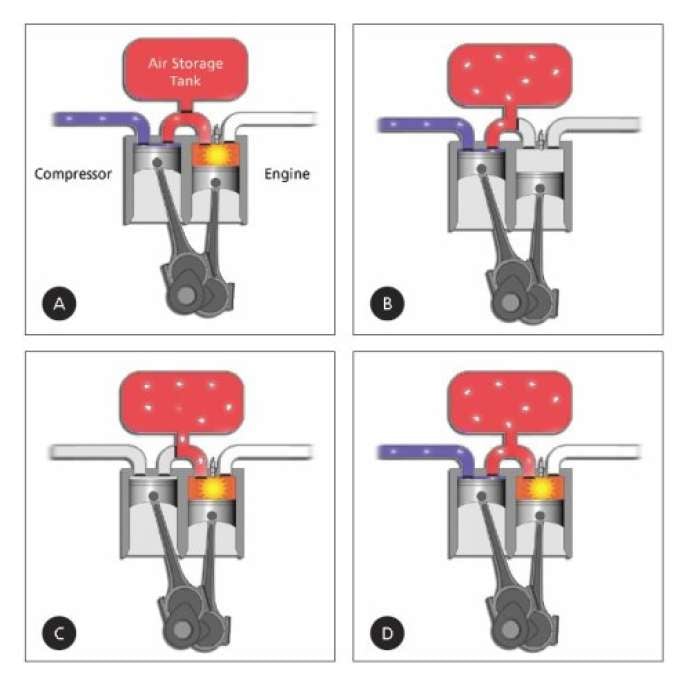If you only counted on the 2011 Detroit Auto Show displays, you might think hybrid automatically means electric. That myth is hereby proven wrong, as air is also a viable medium to store energy.
According to today’s Scuderi press release, these latest findings are significant, based on actual data generated from the Scuderi split-cycle engine prototype that is currently under test.
Furthermore, computer models even showed that a base, naturally aspirated, non-air hybrid Scuderi™ engine operating in a 2005 Chevrolet Cavalier consumes 25 percent less fuel, under similar drive conditions.
For the record, Scuderi Group is an engine development company that is re-engineering the conventional four-stroke engine to advance fuel-efficient engine design. Today’s announcement indicates strong preliminary results from vehicle simulations conducted on the Scuderi™ split-cycle engine at Southwest Research Institute (SwRI).
“These results are only going to get better,” said Sal Scuderi, president of Scuderi Group. “The naturally aspirated Scuderi split-cycle engine will continue to improve when further optimized, and the Air-Hybrid performance will increase with higher air tank pressures. We expect the efficiencies to continue to climb as modifications are made and new simulations are conducted, including computer modeling of the 2011 Nissan Sentra running with a Scuderi engine.”
For those who may be unaware, the split-cycle tackles the four strokes of the conventional IC engine and divides it into a cold and hot side for a dedicated pair. The cold side has a dedicated piston which creates the intake and compression; the other dedicated piston creates the power and the exhaust. Fact is, two pistons manage the process per single stroke as opposed to one piston having to stroke twice to complete one full cycle.
The consistency and accuracy of Scuderi’s approach to firing after top dead center (ATDC) is essential to the engine’s ability to combust cleaner and produce higher fuel efficiencies. For the record, conventional engines fire before top dead center (BTDC).
The preliminary data from the Chevy Cavalier simulation is evidence that Scuderi’s unique combustion process works and holds significant promise for automakers to meet stricter fuel efficiency standards by 2016. A report that outlines the findings of the engine’s simulation program is expected to be available later this year.
Exclusive Interviews
Thanks to an email that I received directly from Drue Hontz, Founder and CEO of Track180, the website posted 4 exclusive interview segments with the Scuderi brothers. For your convenience, here is the direct link to each interview in order.
Part 2: Scuderi Engine improves diesel performance
Part 3: Concerns about oil company reactions
Cost containment
Why use a hybrid engine that requires two propulsion systems when all you need is one? Further note that batteries of electric hybrids really act more as passengers whenever the vehicle is cruising in highway mode anyway.
The air hybrid is a singular system that functions in both city and highway. That makes it equivalent to a battery electric hybrid for less cost for city and highway driving. Furthermore, it’s a scalable technology that requires less cost, and can be configured as a diesel that will run on bio-fuels.
-----------------------
About the Author: After 39 years in the auto industry as a design engineer, Frank Sherosky now writes articles, books and ebooks via authorfrank.com, but may be contacted here by email: [email protected]
_________________________________________________________________
Additional Reading:
High-efficiency small cars shine at 2011 Detroit Auto Show
Toyota expanding marketability of Prius at 2011 Detroit Auto Show
Honda Civic GX the only natural-gas passenger car at 2011 Detroit Auto Show






Comments
You have told us how to
Permalink
You have told us how to invest in the new lead-carbon battery technology with AXPW. How cold one invest in this interesting technology?